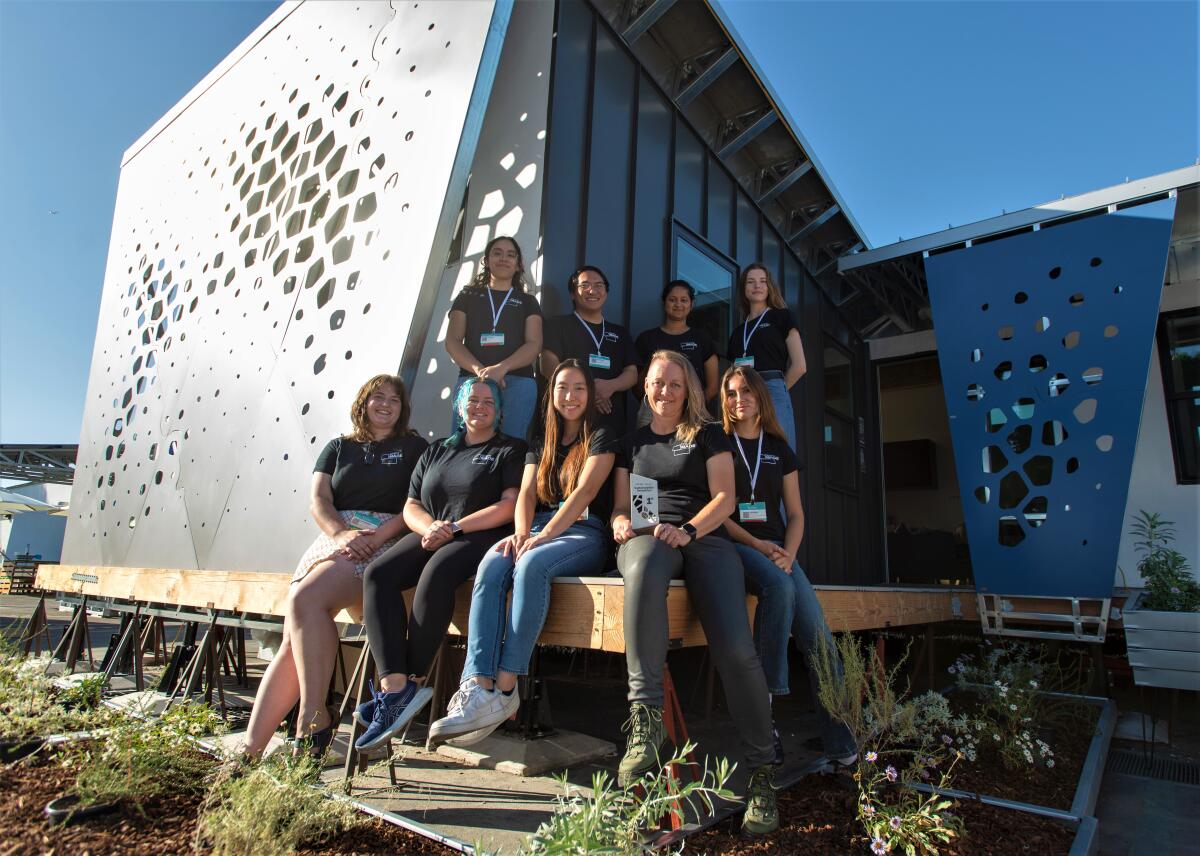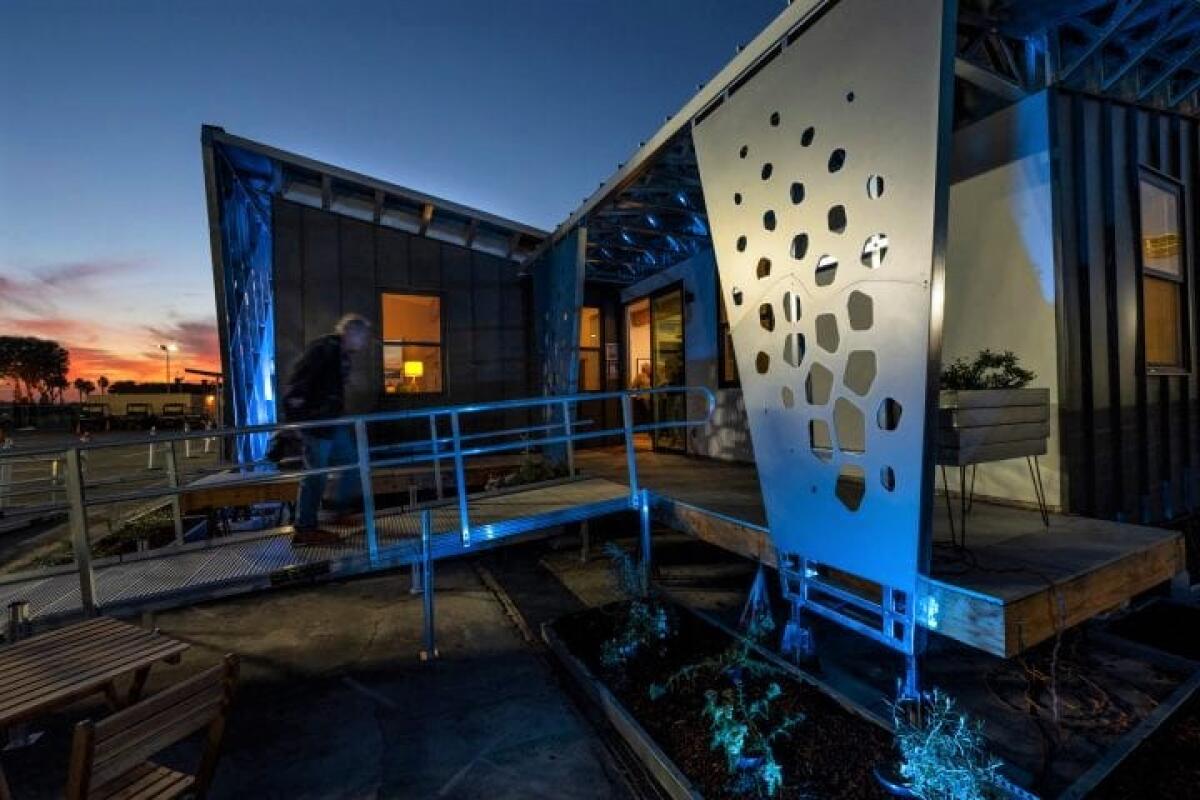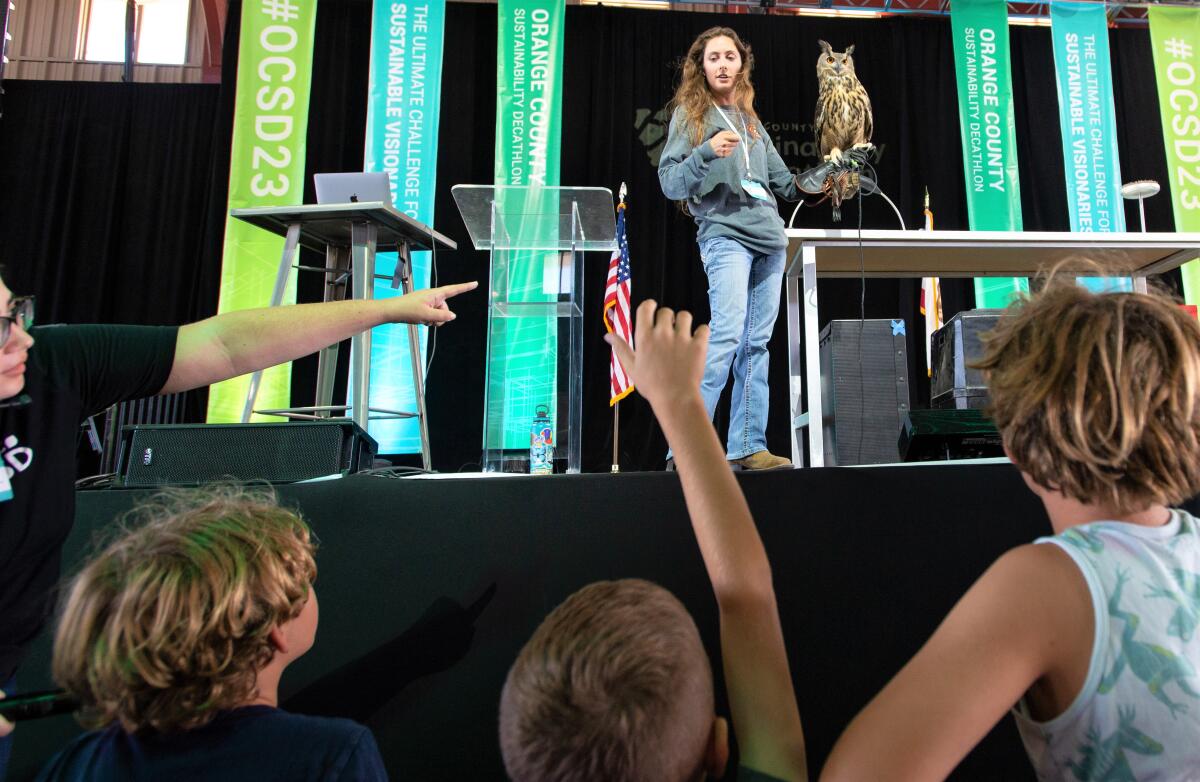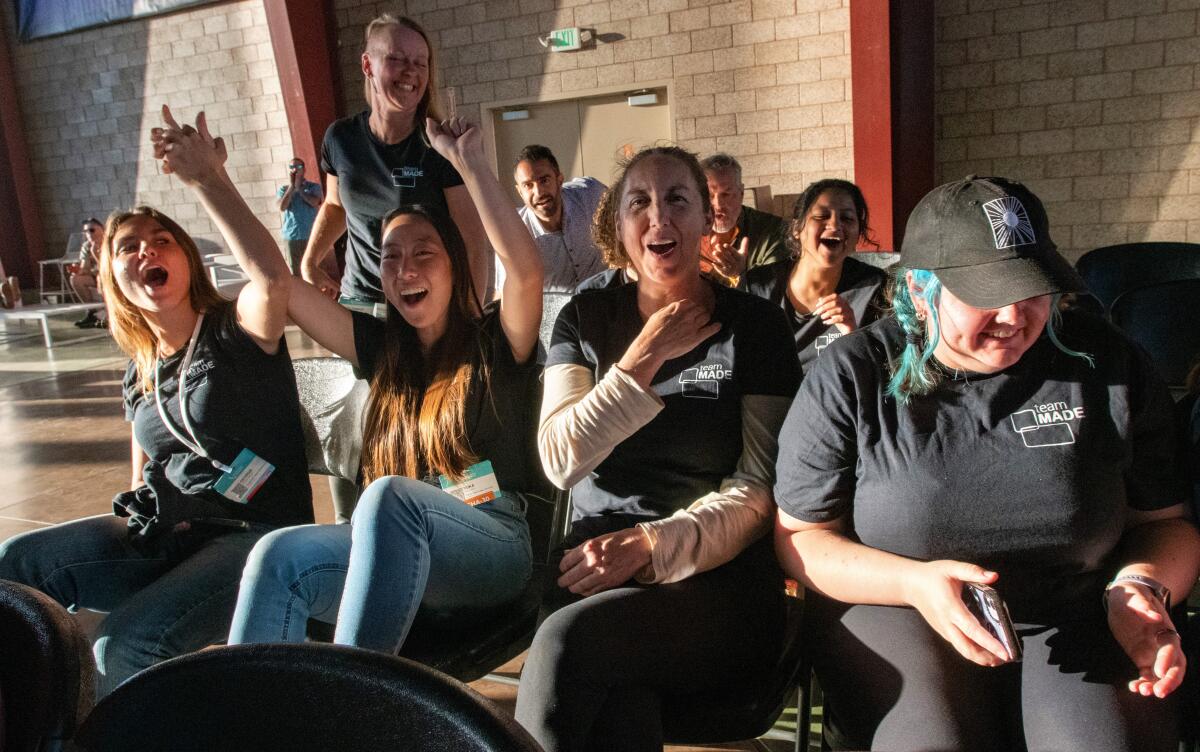O.C. Sustainability Decathlon provides a sneak peek at a zero-net future, created by youth

In the world of college coursework, designing and building a modular house that can accommodate an entire family without creating any carbon emissions sounds like a steep ask.
But that’s exactly what one team of students from Orange Coast College and UC Irvine have been doing, side by side, for the past year and a half.
The stylish, solar-powered result of that collaboration, called “luminOCity home,” was on full display at the Orange County Sustainability Decathlon at the county fairgrounds in Costa Mesa earlier this month.
Using FrameCAD, a computer animated system for creating and cutting light-gauge steel framed designs, the team built a 750-square-foot, two-bedroom house with high ceilings that can withstand a 9.0 magnitude earthquake.

“It was a lot of work and a lot of cramming — it was super stressful,” OCC architecture student Georgie Ampudia, a member of teamMADE (Modular Affordable Dwellings for the Environment), said of the final few days of construction.
“We were really rushing it to get it to the fairgrounds. We didn’t know if we were going to open on time,” Ampudia continued. But we ended up being one of the first three teams to open up.”
Held on two consecutive long weekends, the inaugural decathlon was envisioned as sort of a biennial world’s fair of sustainability, designed to showcase environmental innovations, net-zero practices and green jobs in action.

It featured educational entertainment for school kids, as well as environmental-themed vendors, demonstrations and a green job fair.
“When I was 8 years old and living in Queens, I went to the New York World’s Fair. It was the most amazing thing I’d seen in my life,” said Fred Smoller, a Chapman University instructor who co-founded and raised funds for the inaugural event with colleague Mike Moodian.
“I said, ‘How did they ever think of this?’ That stuck with me,” he continued. “I thought we could create a world’s fair of sustainability, and we could stun and amaze people.”
The show’s main event, the design-and-build competition, drew 14 teams of undergraduate and post-secondary researchers, architects, builders and innovators, all tasked with creating affordable, energy-efficient modular homes that could be easily reproduced and transported to a “Sustainability Village” at the fairgrounds.
Edged out slightly in the General Excellence category by the Rancho Cielo Construction Academy in Salinas, teamMADE placed first in the Engineering and Construction and Market Potential categories, scored second in Sustainability and Resilience and third in Architecture and Interior Design, Communications and Marketing as well as Innovation.

But perhaps the biggest win is the one they helped score for the at-risk individuals who will be living inside the home they created.
The UCI/OCC team specially designed “luminOCity” for Placentia nonprofit Homeless Intervention Services of Orange County, measuring out a plot of land where the structure will serve as transitional housing for men ages 18 to 24.
Ampudia explained the builders were given the images of a turtle shell and a butterfly metamorphosis as inspiration for the finished product. They thought long and hard about how to incorporate those as elements in their design.
“We wanted to encapsulate the feeling of having a safe space to be in and being free from harm and danger,” she said of the team’s motivation. “They’re the ones at risk of being homeless, so we want them to feel safe.”

Another modular entry was the LUCID home designed by a team of UCI civil and environmental engineering graduate and undergrad students.
With fire-resistant walls made of recycled high-density foam sandwiched between thermally insulated concrete, the structure tied for first place in an Energy Efficiency performance rating challenge and came in fourth in seven other categories.
“This house actually absorbs carbon dioxide,” explained engineering professor and team adviser Ayman S. Mosallam. “Usually people say net-zero — but this is negative.”
Smoller acknowledged Thursday that while the event’s overall attendance could have been better, the competition succeeded in getting young people thinking about how to reasonably tackle climate change, while exposing the public to green innovation in a way that is fun, engaging and, above all else, doable.
“Sacramento is making laws that will change the cars we drive, how we get around, the houses we live in and the places we work,” he said of the need for future decathlons.
“If they’re going to do that, we need to do something that will engage businesses, the academic public and engage the public sector — I think that overall goal makes sense.”
Contributor Eric Licas assisted in the reporting of this story.
All the latest on Orange County from Orange County.
Get our free TimesOC newsletter.
You may occasionally receive promotional content from the Daily Pilot.




